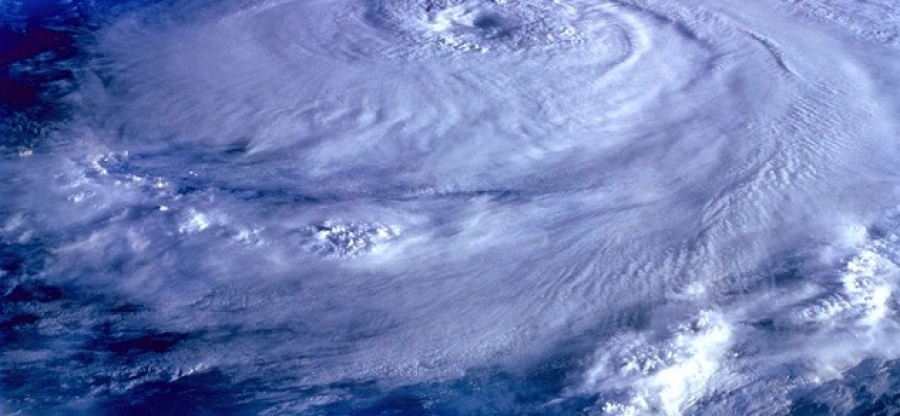New contribution on the potential of present actions in relation to the possible future trajectories of the Earth System in the Anthropocene

Human beings constantly interact with the environment in the same way that our environment continually interacts with us. That is because we are part of an integrated whole, often referred to as a socio-ecological system which is comprised of the natural and human system and that is originated by the interaction of diverse (sub)systems or components. These complex systems, just like all systems, have distinct characteristics that emerge from the interaction of their diverse components and where “the whole is more than the sum of its parts”. Other main features are: non-linearity in system responses, the existence of thresholds or sudden changes, as well as resilience mechanisms and feedbacks that may be positive or negative.
The paper entitled “Trajectories of the Earth System in the Anthropocene” (*) whose authors include various current and past SARAS members was published recently on the PNAS (Proceedings of the National Academy of Sciences of the United States of America) scientific journal). It represents a key contribution to knowledge in relation to the possible trajectories that the Earth System could follow and their link to the actions and pathways that we could be taking as society in the present.
The Anthropocene is a new geological epoch proposed by the scientific community based on the observation and evidence that human impacts on planetary processes have become so profound that they have expelled the Earth from the Holocene epoch. Anthropocene conditions transgress Holocene conditions in several aspects. The knowledge showing that human activity now rivals geological forces in influencing the Earth System’s trajectory has important implications for both science and societal decision making.
The authors, Marten Scheffer (Director of SARAS Advisory Board), Carl Folke (SARAS Honorary Fellow), Will Steffen and Johan Rockström, among others, explore the risk presented by the feedbacks that may be pushing the Earth System towards a planetary threshold. They alert us that, if crossed, the capacity for stabilizing climate around intermediate temperatures would be lost, which would result in continual warming, even as CO2 emissions to the atmosphere are being reduced. As a result, this would cause several interruptions to ecosystems, societies and economies. To this respect, the article analyses potential future trajectories for the Earth System starting from four key questions: Is there a planetary threshold in the trajectory of the Earth System that, if crossed, could prevent stabilization in a range of intermediate temperature rises? Given our understanding of geophysical and biosphere feedbacks intrinsic to the Earth System, where might such a threshold be? If a threshold is crossed, what are the implications, especially for the wellbeing of human societies? What human actions could create a pathway that would steer the Earth System away from the potential threshold and toward the maintenance of interglacial-like conditions?
This article represents an interesting contribution to the debate and discussion on the weight that current decisions and technological trends have in determining or influencing the trajectories that the Earth System might take in the next hundred and thousand years, resulting in conditions that may be inhospitable for our societies and the different species that we know on the planet today. In this/such sense, they warn us on the need to act in a collective way to move way from such threshold, which implies the administration of the whole System Earth -biosphere, climate and societies- and may include the decarbonization of the global economy, technological innovations, new governance arrangements and social values among others.
If bio geophysical feedback looks are considered together with the interaction with the planetary degradation caused by humans, it would result in new dynamics and tipping points that could include a domino effect worse than predicted -even projecting not to trespass the temperature rise under 2 degrees Celsius beyond pre-industrial levels. The complexity of the system and its non-linear interactions support the assertion that triggers could be reached earlier and be more uncertain than predicted, potentially largely destabilizing the planet.
On the other hand, the article explores what would require generating a state of Stabilized Earth that may move the planet in the opposite pathway of that of a Hothouse Earth. This state would include a dynamic generated by human action that may adopt management mechanisms to maintain certain conditions of adaptability and sustained action. Stabilizing the Earth to a temperature rise that may not exceed the 2° C (a “Super-Holocene’ state) would require great reduction in greenhouse gases emissions, the protection and improvement of carbon sinks, efforts to reduce atmospheric CO2 and the managing of solar radiation to prevent the inevitable impacts of a current and constant temperature rise.
Finally, the authors highlight the idea that human societies and their activities are an integral part of the complex Earth System and that this would imply a reconfiguration of our behaviors. Innovation, governance systems, values and the use that we make of technology are all part of the challenges and transformations required. To achieve a prosperous state in which humanity can keep existing in a Stabilized Earth pathway, the engagement of all society -nations, economies, businesses, institutions and individuals- is key. To achieve this, it is important to generate adaptation and resilience strategies that may enable us to navigate future challenges, which places humanity at a critical point for the adoption of actions that will determine the future of the planetary trajectory for centuries and millennia. The current critical points for action will determine which of the two trajectories our planet might follow in a near and not so near future.
To read the full paper, click here
(*) Will Steffen, Johan Rockström, Katherine Richardson, Timothy M. Lenton, Carl Folke, Diana Liverman, Colin P. Summerhayes, Anthony D. Barnosky, Sarah E. Cornell, Michel Crucifix, Jonathan F. Donges, Ingo Fetzer, Steven J. Lade, Marten Scheffer, Ricard Winkelmann, and Hans Joachim Schellnhuber (2018). Trajectories of the Earth System in the Anthropocene. Proceedings of the National Academy of Sciences.
